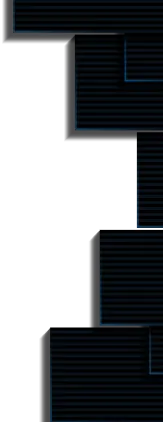Algorand — A Blockchain Network for Payments
Author: Kaushal

Algorand is an open-source, permissionless, and censorship-resistant blockchain network for payments. It was launched in June 2019 by an MIT professor, Silvio Micali.
Algorand is a smart contract-based blockchain built to mitigate the problem of the blockchain trilemma of attaining security, speed, and decentralization all at the same time. The network has a throughput of 1000 transactions per second with less than five seconds of latency in transaction confirmation, making it a viable option for large-scale requirements and other use cases.
Algorand relies on the Pure Proof-of-Stake consensus mechanism and has a unique token-holding reward distribution system.
Algorand's Structure
The Algorand network has a two-tiered blockchain structure.
The base layer, or layer one, handles smart contracts and atomic swaps between two Algorand based tokens. It's also the operational layer where all the processes take place, and security and compatibility are ensured.
On the base layer, developers can create ASA, the native token standard of Algorand, similar to ERC-20 on Ethereum.
When it comes to smart contracts, the simpler ones that don't involve any sophistication are settled on the Algorand base layer and are known as ASC1s, Layer-1 Algorand Smart Contracts. These layer-1 settled contracts maintain the same level of security as the consensus protocol.
The second layer on Algorand is reserved for complex smart contracts. This division of simple and complex smart contracts makes Algorand highly efficient. With the complex transaction getting settled off the main chain, simple transactions can be processed with high throughput and efficiency without congesting the network.
Pure Proof-of-Stake
Algorand has given a unique spin to the Proof-of-Stake consensus mechanism, which it calls Pure Proof-of-Stake (PPoS).
PPos is more democratized than the simple PoS mechanism. The barrier to entry to becoming a validator and making the consensus process more decentralized is low compared to PoS. Only a single ALGO coin is required to become a validator. Ethereum2.0 would require minimum collateral of 32 ETH to start a validator node. Pure Proof-of-Stake has a downside, too. The low staking requirement might allow validators to behave maliciously and approve false transactions, as they have very little to lose. They might not interact in the best interest of the network.
The Block Production under PPoS
In the Proof-of-Stake validator, nodes are selected randomly, with preference given to the node with the highest stakes. In contracts, Algorand PPoS requires a two-phased block creation process: proposing and voting.
Any Algorand holder can participate in the proposing and voting by staking the ALGO tokens and generating a valid participation key to become a Participation Node. These participation nodes are synchronized by another Algorand network node called Relay Nodes. The Relay Nodes allow for communication among Participation Nodes and do not precipitate directly in the voting or proposing processes.
The Proposal Phase
During the proposal phase, a block leader is appointed to propose the current block to be created. They are selected through Algorand's VRF or Verifiable Random Function, an algorithm that selects nodes randomly but is weighted by the relative amount of stake a stakers locks in. The block leader is secretly assigned a private participation key. Only the block leader knows he's been selected to propose a block. The VRF then supplies the block leader with cryptographic proof that allows them to show their status as the current block leader.
Choosing a block leader provides an extra network security layer, as malicious actors are ignorant of who the appointed one is. So they don't have the opportunity to attack anyone and get private participation keys to compromise the network's security.
The Voting Phase
Once the block is proposed, the participation nodes are randomly selected for the voting stage. The job of the participation nodes is to ensure there is no double-spending, overspending, or other similar problems in the transactions recorded in the block.

If the majority agrees, the block is added to the blockchain. If malicious behavior is detected, the entire network goes into recovery mode, where the block proposed is discarded, and a new block leader is chosen.
Slashing
Unlike most other prominent PoS-based blockchains, Algorand hasn't incorporated slashing into its block creation mechanism. In other words, if a node proposes a false transaction, its collateral is not confiscated as a punishment to maintain the sanctity of the blockchain. Instead, the network continues with the bad actor still in the network. While this might be a way to maintain speed and efficiency by moving on from the errors quickly, the Algorand developers face criticism for this aspect of the blockchain.

Using this two-phased block creation process, no two blocks get proposed simultaneously for the same slot implying that there can never be a fork of the Algorand blockchain. Once the participation nodes pass the block, it has already achieved consensus. Blockchain users can rely on it from the get-go, reducing latency in transfer confirmation on the user's end.
The Native ALGO Token
ALGO is the native currency of the Algorand blockchain and serves as a medium of exchange across the Algorand ecosystem. Due to Algorand's special protocol design, a portion of the rewards paid to validator nodes is distributed among the ALGO coin holder rather than just getting distributed to the block creators. This way, all the token holders get rewarded just by holding the ALGO token. They earn a handsome 7.5% annual percental yield which is way higher than what traditional finance banks offer. The rewards get distributed after every 10 minutes and serve as a motivation for crypto natives to join the blockchain.
The developers behind Algorand also want to increase participation in staking. The stakers passively earn ALGO while contributing to the chain's decentralization. Therefore, to reduce the friction, the users don't need actually to lock in their assets as a stake; instead, they keep them in non-custodial wallets or exchanges to access their earned rewards.
Like Bitcoin, Algorand has a hard cap on its total supply of 10 billion. The tokenomics looks as follows:
- 3 billion ALGO tokens will be released into the market over the first five years, including the initial auction of 25 million ALGO coins.
- 1.75 billion ALGO tokens to be distributed as rewards to Participation Nodes.
- 2.5 billion ALGO tokens to be distributed to Relay Nodes.
- 2.5 billion ALGO is allocated to the Algorand Foundation & Algorand Inc.
- 0.25 billion ALGO to be given as end-user grants
Like other blockchain protocols, Algorand is also marching towards a token distribution viable for the long-term success of the protocol. The Algorand Foundation has access to a large number of ALGO tokens which, as per critics, make the Algorand blockchain a centralized protocol (at least in the short term). Algorand's democratic reward distribution has been deployed to reduce centralization down the road.
The Algorand Foundation
Launched two years ago, the Algorand blockchain is still in its early stages of operation. Algorand Foundation, a non-profit organization, manages the funding and development of Algorand Inc and Algorand blockchain.
The foundation also sponsors blockchain development education in universities with its 'Global University Program,' which includes prestigious universities, for example, MIT, UC Berkeley, and many such top institutions worldwide. It also sponsors events, hackathons, educational classes, and certifications.
The Algorand Foundation released two accelerator programs in 2020 in Asia and Europe: Algorand Asia Accelerator & Algorand Europe Accelerator. These programs focus on helping developers building on the Algorand network by providing them with promising projects to build with one-to-one support: from the initial strategy formulation to the product launch. The foundation wants to help the Algorand ecosystem expand and thrive long-term.
The future
A relatively new project in the crypto space, Algorand has already grown to catch the eyeballs of many crypto natives and is currently holding a market cap of over $5 billion. It's shown to be a powerful platform with robust tech innovation, developers' support, and real-life use cases. Algorand's highly unique coin rewards system and consensus mechanism have birthed a new standard in the blockchain space and are expected to give competition to other leading smart contract-based layer-1s.
The infamous Ethereum high gas makes developers and users look for other less expensive blockchains; some have turned towards Algorand to deploy their DApps and DeFi solutions.
Furthermore, as central banks worldwide are looking for ways to build central bank digital currencies or famously known as CBDCs, Algorand is a viable choice. Marshall Island in the Pacific is already using it.





Subscribe to receive Alpha!
Join 4.3k subscribers from renowned companies worldwide and get a weekly update in your inbox. Stay updated on the latest and finest projects and product updates.

